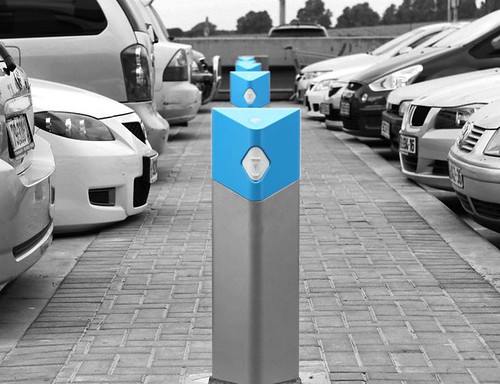Taking a leaf from the Healthcare protests, Big Oil Plans to Fight Obama’s Climate Change Strategy
(Sources contributing to this hybrid report: Streetsblog, Tree Hugger, The Huggington Post & Guardian, UK)
The US oil and gas lobby are planning to stage public events to give the appearance of a groundswell of public opinion against legislation that is key to Barack Obama’s climate change strategy, according to campaigners.
A key lobbying group will bankroll and organise 20 ”energy citizen” rallies in 20 states. An internal memo obtained recently by Greenpeace USA details polluting interests’ plans to launch a nationwide astroturf campaign attacking climate legislation at public events scheduled throughout the final weeks of recess before the Senate returns to debate the issue in September.
The email memo (shown below), which appears to come from the desk of American Petroleum Institute president Jack Gerard, asks API’s member companies to recruit employees, retirees, vendors and contractors to attend “Energy Citizen” rallies in key Congressional districts nationwide in the closing weeks of the August recess. Taking a page from the playbook of astroturf campaigners currently crashing health care town hall events across the country, API hopes to similarly sully productive communications between Congress members and their actual constituents at public events scheduled for the coming weeks. Gerard states that API is ready to bus in company members and provide logistical support, and reveals that API has retained “a highly experienced events management company that has produced successful rallies for presidential campaigns, corporations and interest groups.”
“Our goal is to energise people and show them that they are not alone,” said Cathy Landry, for API, who confirmed that the memo was authentic.
The email from Gerard lays out ambitious plans to stage a series of lunchtime rallies to try to shape the climate bill that was passed by the house in June and will come before the Senate in September. “We must move aggressively,” it reads. Gerard called this a “sensitive” plan that puts a “human face” on opposition to climate and energy reform. The campaign plan places a special focus on 21 states picked by API for having “a significant industry presence” or “assets on the ground.”
The rally sites were chosen to exert maximum pressure on Democrats in conservative areas. The API also included talking points for the rallies – including figures on the costs of energy reform that were refuted weeks ago by the congressional budget office.
The API drive also points to a possible fracturing of the US Climate Action Partnership (Uscap), a broad coalition of corporations and energy organisations which was instrumental in drafting the Waxman-Markey climate change bill that passed in the House of Representatives in June.
Whether the oil-industry rallies will command even a fraction of the attention that the health care events are getting remains an open question. Most of the health “town halls” were organized by Democratic lawmakers as a forum to hear constituent concerns, while the “Energy Citizen” events — one of which appears to be slated for next week in Houston — would be purely private-sector productions.
Environmental groups’ advance knowledge of the anti-climate rallies, however, could lead to on-the-ground battles over the future of the climate bill. The ultimate intended audience for that showdown: Democratic senators who remain on the fence about regulating emissions.
The memo closes with a ‘for your eyes only’ plea: “Please treat this information as sensitive and ask those in your company to do so as well… we don’t want critics to know our game plan.”
TransportGooru Musings: What a pity! For the sake of money, people like Jack Gerard tend to ignore the growing threats of global warming and seem to care less about what can happen to the very planet they live . They seem to be ready to even pledge their children’s future, let alone their own future by playing such “Games.” Why does the oil lobby engage in such a thing? Treehugger said it aptly: “…is all to say, to ensure that anything that cramps the business-as-usual, carry us down the path to catastrophic climate through continued rampant use of fossil fuels, plans of the petroleum industry is pushed aside in continued favor of big profits.”
Or may be it is the fear of losing out to the growing environmental movement that is making people like Gerard to resort to such measures to keep their business afloat. With more people buying energy efficient cars and the Government making a big push for electric vehicle technology, there may soon be a day the oil companies will be left behind trying to peddle their gooey black mess to unsuspecting folks in rural pockets of America.
When that day arrives, you can imagine the price of oil crashing down! It might someday sell for $10/barrel, if you are ready listen to this investment guru. There is an interesting post on the Infrastructurist blog that features Robert Prechter, an investment guru with a fairly impressive record of prognostication, who says oil is headed below $10 a barrel (maybe as low as $4) and destined to stay there for a long time. This is just a week or so after the world’s leading energy economist declared that we should expect oil to cost perhaps a few hundred bucks a barrel in the not-too-distant future. So, only a one hundred-fold difference, or so. In gasoline prices, it’s the difference between $10 a gallon and 75 cents a gallon. Prechter relies on a form of analysis called the Elliot Wave. It’s based on the principle that the price history of an asset (oil in this case) can tell you something about where where its price is going in the future. It will be really fun to watch what happens to Jack & his band of brothers at API when that day of $10/Barrel arrives for big oil.
Click here to read the entire article. Here is a copy of the above-mentioned e0mail (courtesy of Greenpeace, via desmogblog)














